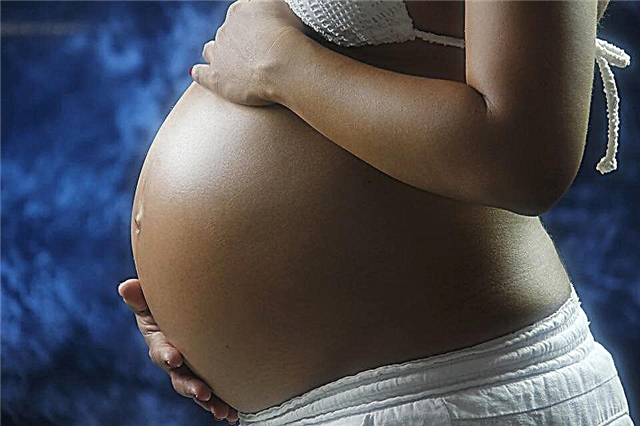
Often, expectant mothers complain to doctors about the appearance of pain in the pelvic region. This manifestation in many women is quite severe. This article will help you understand in what situations and why pelvic bones hurt during pregnancy.


The causes of pain
Soreness in the pelvic area is a fairly common symptom. It even occurs in women who have not had joint problems before pregnancy.
Such a manifestation can be quite physiological. It is especially pronounced in miniature women with narrow pelvic bones. In this case, such a symptom worries the expectant mother throughout the entire period of pregnancy. Carrying a baby is a special period of life for every woman. At this time, the female body begins to significantly change its work.

The change in many processes is due to the changing hormonal background.
During pregnancy, women begin to release specific hormones that have a biologically active effect on all systems of internal organs.
The pelvic area is the most vulnerable part of the female body. It is in this zone that the baby will develop. Internal female genital organs are naturally adapted for the birth and bearing of babies. However, the course of pregnancy is not always healthy and physiological.
The uterus is fixed in the small pelvis quite firmly. This is necessary in order so that the process of carrying a baby is painless. However, in many women, doctors identify various pathologies of the ligamentous apparatus of this important reproductive organ.

The growing uterus increases several times during the gestation period. Such changes lead to the fact that the pressure on the musculoskeletal system of the pelvis increases significantly. This condition contributes to the development of various pathologies in the joints, ligaments and muscles of this anatomical region in the expectant mother.
Joint changes that occur from the beginning of pregnancy lead to the fact that the gait of a pregnant woman changes. The lumbar spine begins to bend back a little. The increasing load on the hip joints leads to the fact that the woman has a "duck" gait. The larger the fruit, the more pronounced this symptom.

One of the main elements of the pelvis is the sacroiliac joint. It is his ability to expand slightly under the influence of hormones that leads to the successful process of expulsion of the fetus during childbirth.
If the expectant mother has any pathologies in this zone, then it will be quite difficult for the baby to be born independently without the help of doctors. In this case, as a rule, a cesarean section is performed.


In the early stages
In some women, soreness in the pelvic area appears in the very first weeks of pregnancy. If the expectant mother bears twins or triplets, then the severity of this symptom will be somewhat greater. Also, this manifestation is much more pronounced in a woman who "carries" a rather large baby in her tummy.
For many expectant mothers, the pelvis only hurts when walking. In this case, the ligamentous apparatus suffers most. Strong physical exertion can also provoke the appearance of this unfavorable symptom.

Improperly selected workouts only contribute to the fact that the pain in the pelvic region increases.
Many women experience pelvic pain after lifting weights. A strong cough that occurs with a wide variety of pathologies can also lead to soreness in this area.
Frequent adverse symptoms in early pregnancy are of great concern to the expectant mother. Over time, she begins to adapt to them, and closer to childbirth, they already appear much less.

At a later date
In the second trimester of pregnancy, expectant mothers often experience severe soreness in the coccyx area. A baby growing in the mother's womb leads to the fact that this bone in a woman begins to move back strongly.
If, before the onset of pregnancy, the expectant mother had any fractures or injuries to this part of the spine, then the pain syndrome in this case will be much greater.

Quite often, women note that the peak of such pain occurs at 38-39 weeks of pregnancy. This can be explained by the rather large size of the fetus and the preparation of the female body for childbirth.
The last few vertebrae in the lumbar spine can also cause the expectant mother to feel soreness in the pelvis. This is facilitated by the peculiarity of the innervation of this anatomical zone.

Usually, pain in this area begins to manifest itself in expectant mothers by 30-32 weeks of pregnancy, when the baby is already large enough. If a woman is pregnant with twins, then this symptom will appear much earlier.
Not only pathologies of the musculoskeletal system can lead to the development of pain in the pelvic region. Even diseases of the reproductive organs can cause pain in the pelvic region.

Adhesions in the pelvis can also cause pain. Various pathologies of the female genital organs, which were treated with the help of gynecological surgical methods, lead to the development of such a condition. Operations performed on the pelvic organs significantly increase the appearance of adhesions in the small pelvis.
Only a doctor can identify this condition. Surgical treatment is required to eliminate pelvic adhesions. The choice of tactics in this case is carried out by an obstetrician-gynecologist who observes the future mother.

Quite often, the treatment of adhesions in the small pelvis is carried out after childbirth.
Symptoms
The duration of the pain syndrome varies. In most cases, it lasts no more than a few hours. In some women, the pain syndrome is "shooting", and it goes away in 20-30 minutes. A woman may complain of a pulling pain. In this case, soreness may spread to the groin area or legs. With a change in body position, this symptom only intensifies.
A growing baby contributes to the fact that the uterus that grows in size has a strong effect on the internal genital organs located in the small pelvis. As a rule, this is manifested by an increased frequency of urination or persistent constipation. These symptoms are most common in the later stages of pregnancy.

The change in the angles of the hip joints is especially pronounced by the fact that a woman begins to walk straight, strenuously straightening her back. This is clearly seen by the time of birth.
It is important to note that the expectant mother instinctively chooses the correct posture that does not bring any pain to the woman. In the later stages of pregnancy, it becomes more difficult for a woman to get up or sit down. Side bends or downward bends can also contribute to pelvic soreness.

What to do?
In order to reduce pain in the end portions of the lumbosacral spine, a woman should sit or lie only on hard surfaces. Too soft a mattress or prolonged sitting in your favorite chair can lead to increased pain.
It quite often happens that natural childbirth in the presence of pathologies of the musculoskeletal system is prohibited by doctors. Various pathologies of the ligaments of the hip joint and inflammatory diseases of the muscular apparatus can lead to a woman having a cesarean section.

Many expectant mothers are afraid of surgical obstetrics. You should not be afraid of a cesarean section, especially in the presence of various pathologies of the musculoskeletal system. In this case, doctors will make an incision, making it easier for the baby to be born.
If a woman has signs of symphysitis, doctors will recommend a caesarean section. Natural childbirth in this case can even contribute rupture of ligaments. In such a situation, doctors will apply stitches. After giving birth, a woman can spend about 6 months observing strict bed rest. This time is necessary for the healing and restoration of the ligamentous apparatus of the pelvis.

In order to identify this pathological condition, doctors must determine the degree of divergence of the symphysis. If this clinical sign does not exceed 2 cm, then you should not worry. In such a situation, as a rule, doctors allow the expectant mother to give birth herself, without a cesarean section.
During natural childbirth, the baby begins to actively move along the mother's genital tract. This leads to additional separation of the pelvic bones. This process develops gradually, as the baby moves along the genital tract. This physiological response is due to nature in order to so that the woman and her baby do not have any damage during childbirth.

In order to reduce the likelihood of pain in the pelvic region, doctors recommend that expectant mothers reduce the intensity of physical activity. Pregnant women with soreness in the pelvic region should not lift weights and climb several stairways.
The use of a roller helps to reduce pain for many women. This pillow can be placed under your feet or under your knees. Doctors also call this position the "frog" pose.

Adverse symptoms appear quite often in women whose back muscular frame is not well expressed. You can strengthen your muscles with a special set of exercises. Also, yoga exercises for pregnant women are suitable for strengthening the muscles of the back and pelvis.
A very unfavorable sign is that a woman still has soreness in the pelvic region after the birth of the baby. In this case requires a mandatory consultation with a doctor. In such a situation, an x-ray of the pelvic bones may be required.

In difficult diagnostic cases, doctors recommend a CT or MRI scan. These highly accurate diagnostic methods identify various pathologies at the earliest stages of their formation. A doctor-rheumatologist deals with joint problems. If necessary, this specialist can refer the woman for additional diagnostics.
It is important to remember that taking pain medications for a long time can be very dangerous.
Such funds can lead to the development of inflammation of the walls of the stomach, as well as contribute to the appearance of erosive processes in the gastrointestinal tract.

Pain medications should only be taken on the advice of a doctor. If a woman takes such funds on her own every day and several times a day, this is already a significant reason to see a doctor.
If during pregnancy or after childbirth a woman has been diagnosed with any pathology of the musculoskeletal system, doctors may prescribe her chondroprotectors... These funds are necessary in order to reduce pain in the pelvic region, as well as prevent further destruction of cartilage and ligamentous apparatus.

For information on why the hip joint hurts during pregnancy, see the next video.



